Review: The Legend of Zelda: Breath of the Wild
Written by Ben Vollmer
There will come a moment in Breath of the Wild where you will figure out that you can’t do everything that comes to mind. For me, that moment game about five minutes into the game when I tried to burn a tree down with my flamed stick. I did this for no real reason, of course, other than that I just wanted to see. I wanted to test the boundaries of what I could and couldn’t do.
That was the first and last time the game stopped me from doing what I wanted. Everything from tying some balloons to a raft and crafting a makeshift hot air balloon from laying down a set of metal swords to double as conductors between two electric sockets. Breath of the Wild sets so few boundaries on the player that you actually forget that even exist.
The Legend of Zelda: Breath of the Wild is a breakaway from the franchise, and really, from video games altogether. There are moments when the game will introduce more than a dozen new concepts in a span of an hour. There are also moments when the game will utilize the best ideas from other franchises, namely games with famously high critical reception (Dark Souls, The Legend of Zelda, and Skyrim being the first ones that jump to mind).
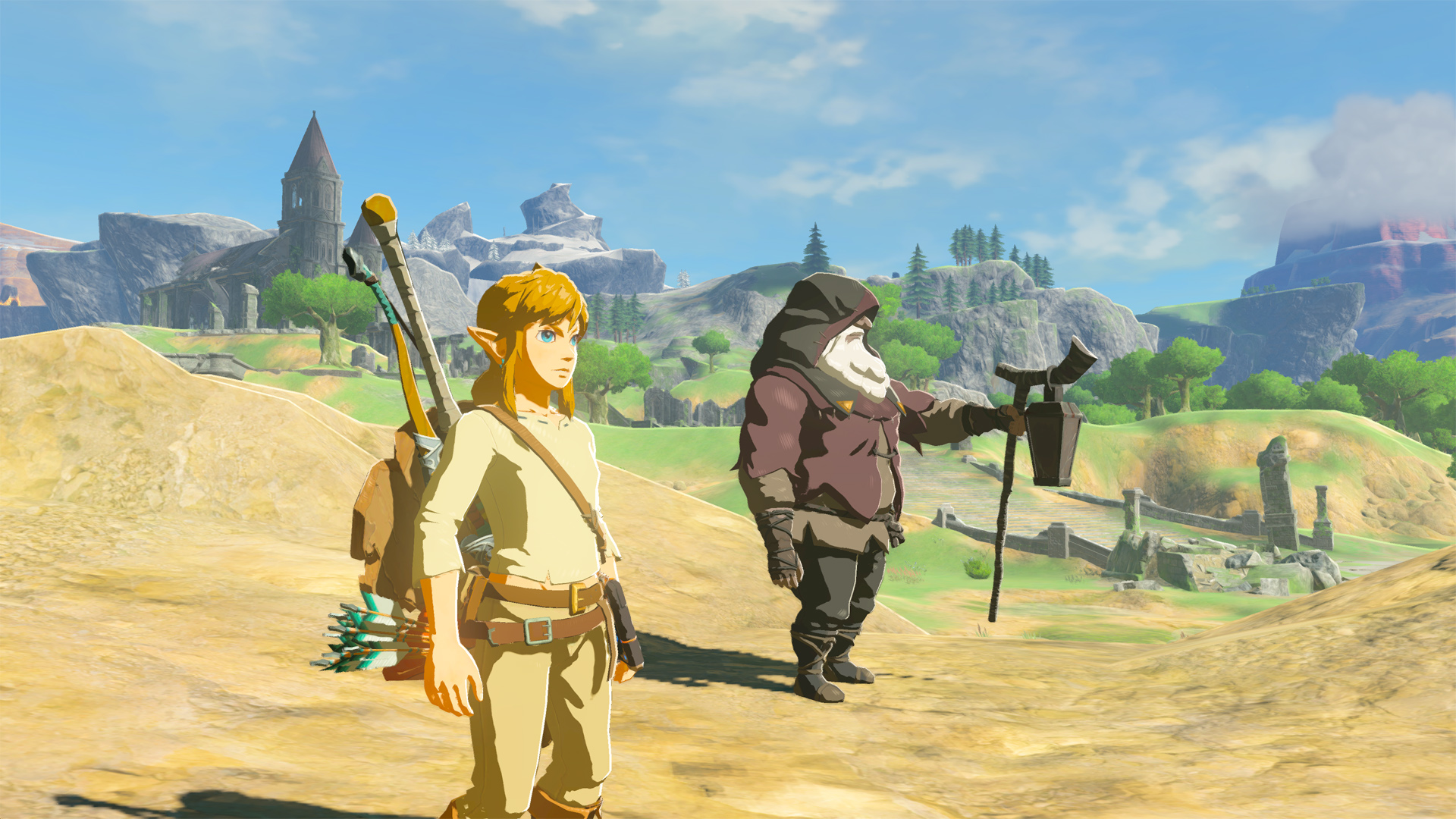
At its best, Breath of the Wild will leave you forgetting that you have a controller in your hands. Without taking a lot of RPG mechanics, Link’s adventure feels an awful lot like one of the best role-playing experience ever. Between crafting new recipes, managing Link’s body temperature and even having a say in the way that he looks, there comes a point where every player’s Link will be different in some fashion. At the heart of this role-playing, and Breath of the Wild, is the expertly done exploration.
One of the first things you’ll realize while playing the game is that you can go anywhere. With the exception of a couple specific locations – which are too hot or cold for Link to survive without proper gear – you can go anywhere you want. Even then, the gear is readily available to you from the get go, should you make it a point to go get it. Among the game’s best achievements is its land marking. There isn’t much in the way of a HUD, in fact, there’s actually a setting that turns off the HUD altogether, but you can easily identify points on the map via the distinct designs.
For instance, right from the get go you’ll notice a large volcanic mountain. It’s almost impossible to miss it, especially when you locate and climb the game’s first tower. It’s so far off in the distance that most players will make a mental note of it and head that direction later on, but there’s nothing stopping you from setting off on an adventure and making it your first point of interest.
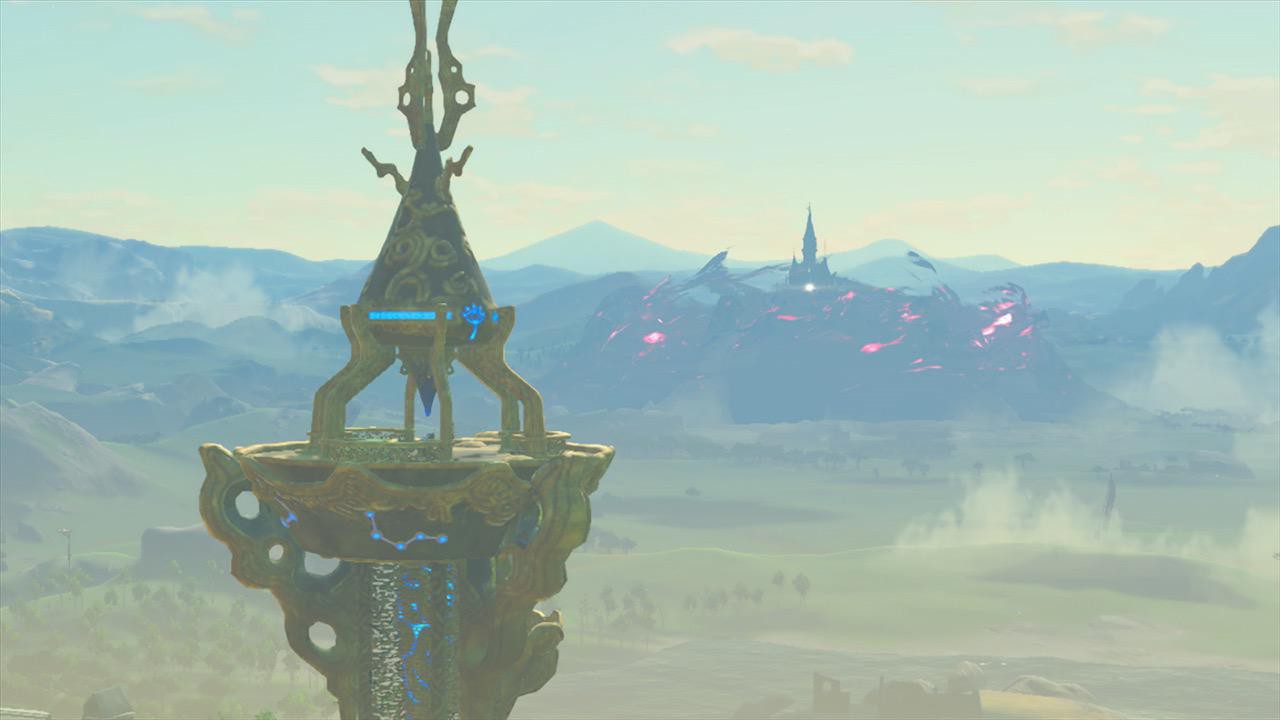
What is more likely to happen for players is to notice the more immediate landmarks, whether it be a large pond of a heavily wooded area. Inside these locations await treasure, collectibles and often boss fights or NPCs. It’s a remarkable use of space, even when you consider the diminishing returns on some of the collectibles. Discovery is very much a part of the game, especially when you consider that many of the game’s references to earlier Zelda titles are carefully tucked away.
Aiding Link in all of this exploration is a handy-dandy para-glider, one of the many tools Link is given right off the bat. You can use the glider to sail from one high location to the next, dropping lazily as you soar the skies. This opens the door for towers, of which there are close to a dozen, to feel meaningful. Not only does unlocking a tower give you access to a section of a very, very large map, they also work as the highest points on the map. More often than not, gliding from a tower to your location is the easiest way to get there in a hurry. The glider and towers work in tandem to create a less intrusive fast-travel system.
That being said, the game does have a fast travel system in place. You can warp to towers and Shrines, which work as mini-puzzles and checkpoints, at just about any point. There are times where it feels like the game would have been better off without the fast-travel system, especially because you’re bound to miss one of the game’s many, many collectibles, but by the time you’re rounding out the map, you’ll realize that it can take several hours to travel from one point to the next. Assuming you make some stops for food, Shrines and other side-quests, it could easily take a full 24 hours to get from one end of the map to another. Maybe because there are few areas without anything of note, but Breath of the Wild feels much larger than any game that has preceded it.
It’s also worthy of note that there isn’t a location in the game that you can’t get to. Whether it’s the tip top of a mountain or a flying beast in the sky, everything is accessible. Often times, there’s more than one way to reach it. The easiest thing to do is just have Link climb. It’s slow, but Link can climb just about anything in the game (as long as it’s outdoors). The mechanic puts other open-world explorers like Skyrim to shame, and the idea of returning to a world where you can’t naturally go somewhere seems tedious.
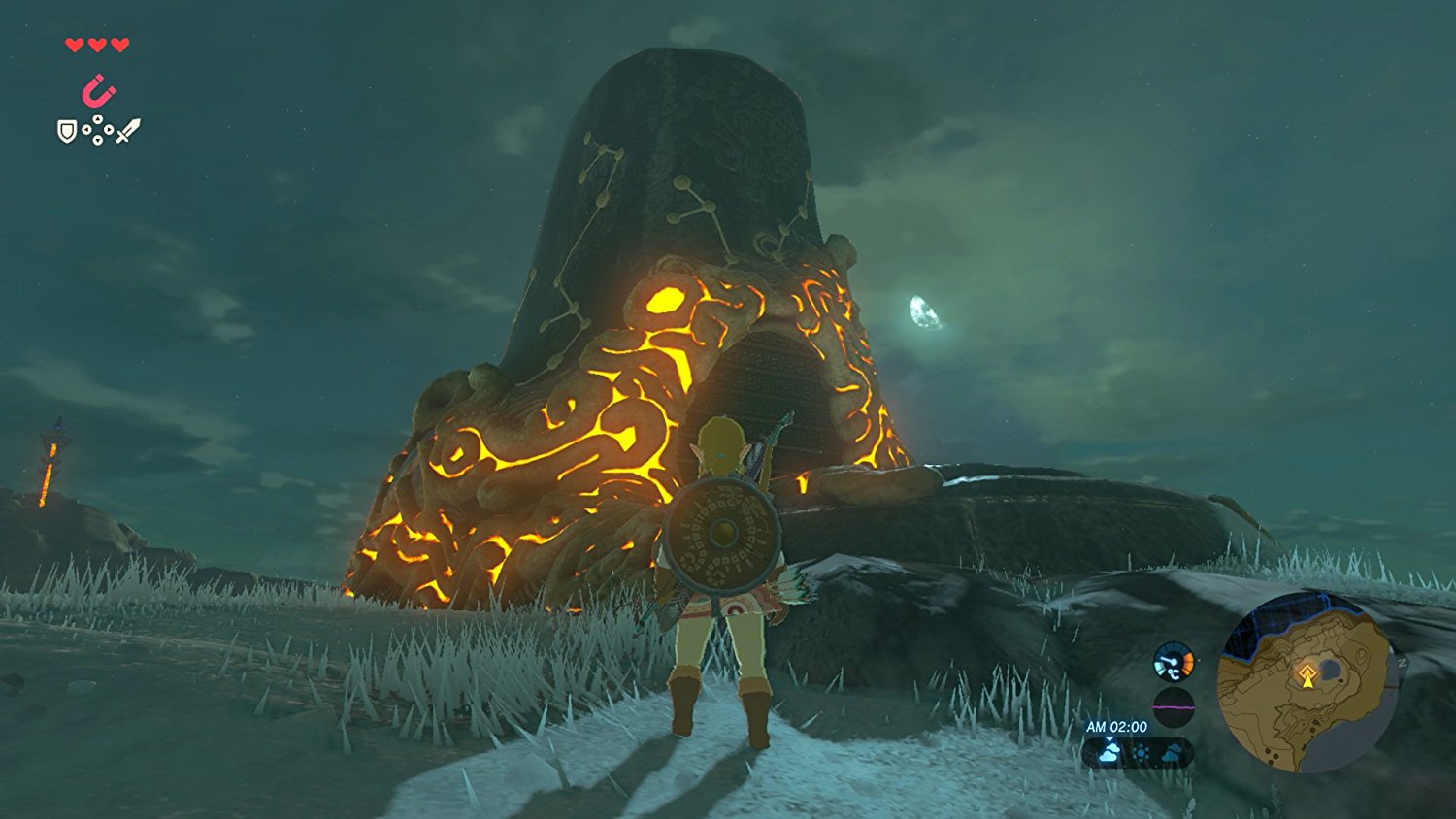
Breath of the Wild doesn’t do everything better than games before it, however. It borrows a lot from the slower, more strategic elements of the Dark Souls combat system. Link’s swings are slower and more deliberate, especially with some of the heavier weapons in the game, and many of the enemies’ attacks are quick and powerful. Jumping out of the way is one of Link’s few defense mechanisms, outside of shields that deteriorate very quickly and don’t help protect you from multiple enemies.
It deserves mention that your weapons can also break, even though there are so many to pick up and find that you’re almost never short on things to use. It has served as one of the few major complaints about the game as a whole, but it’s not too dissimilar from mechanics that can be found in first-person shooters like Halo, where scarce ammo forces the player to swap from weapon to weapon. It can be a little frustrating when rare weapons, often the reward for quests, break down. Seemingly, those weapons could have served as trophies, but after a dozen or so swings, they’re broken just like the rest of them. Unfortunate as it is, you learn to ignore any emotional attachments you have to the weapons you’re gifted.

While the combat is leaps ahead of any other Zelda title, Breath of the Wild doesn’t reach the high marks of the Souls franchise or other combat-focused titles. A big part of the systems in place is timing, including a “flurry” mode, where Link can hack away if he properly times a dodge. There are so many different swipes and attack motions from the enemies that it too often feels random. Even during some of the bigger, longer boss fights, the game struggles with consistency. Sometimes the more perfectly timed dodges won’t yield a “flurry”, while others (some of which Link will even take damage) send him into the slow motion that accompanies flurry mode.
Thankfully, the game makes up for its poor one-on-one mechanics with infinite creative possibilities. You start the game with four different abilities that will serve you for the entirety of the game: bombs (both circular and square), Magnesis (which allows Link to grab a hold of metallic objects), Stasis (which stops an objects motion entirely, but stores the momentum from any potential hits) and Cryonis (an ability that allows Link to freeze a chunk of water and serve as a climbable object). It seems limited at first, but there are so many different ways you can play with the various abilities that you’ll forget about the low number in no time.
For instance, there were moments in the game where I’d grab a metal box and float it over my enemy’s head before dropping it. The high drop point sent the heavy box ramming into the enemy’s skull, immediately killing it. You can also use Stasis to freeze a log. After a few whacks, the log will go flying through the air, piercing any foe it might run into. You can also use the wind to lightly guide a bomb into enemy territory, exploding it at a choice moment. There are so many different ways to achieve your end goal that players will likely never run out of ways to kill enemies.
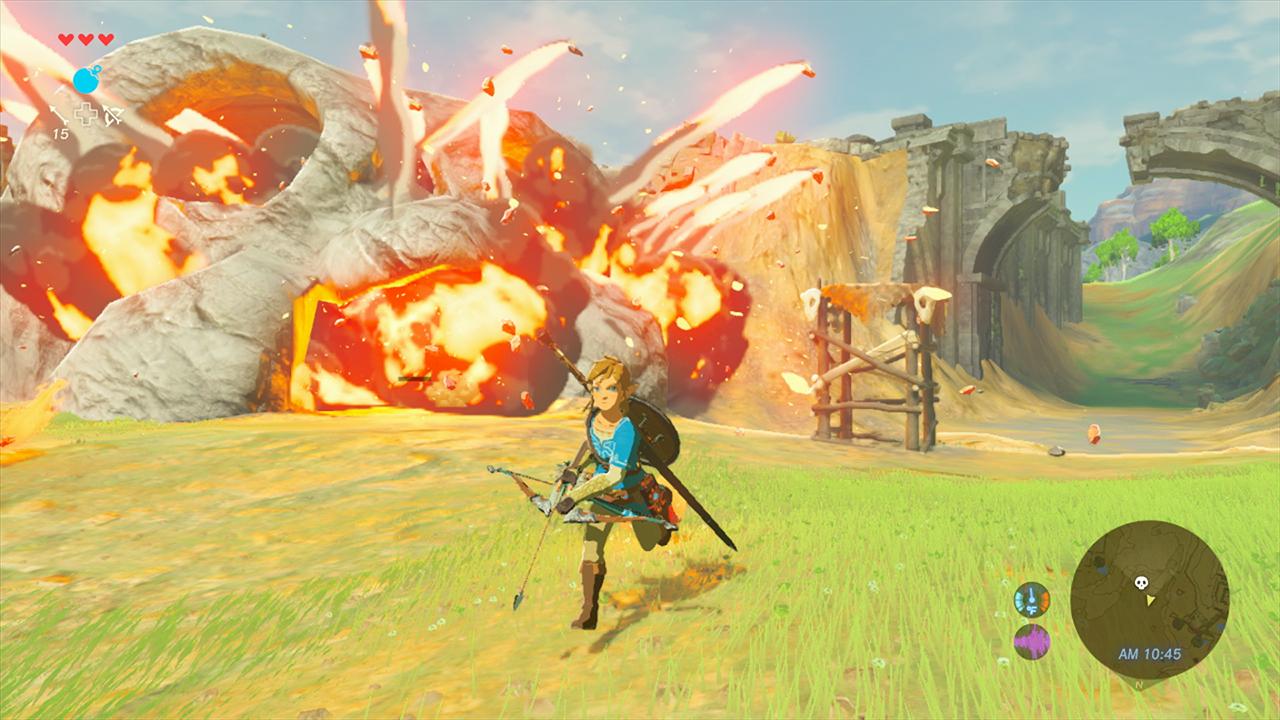
Because all of the systems work so cohesively together, it’s easy to imagine why the puzzle design is the best yet for the franchise. Just like the combat, the best thing the game has to offer is choice. For someone like me, who always comes up with absurd ways to solve puzzles rather than the “normal” way, it functions like a dream. Things work just how you’d expect them to in the real world, from Steaks that can be cooked on an overtly hot rock to metal objects being used as conductors. Often the most enjoyable puzzles are the ones you solve via impromptu brainstorming. For instance, I once had an unlit torch across the room that would activate a bridge should I light it. Unfortunately, I was fresh out of arrows. No way for me to light something that’s not within reach, right? Instead, after a half hour of internal complaints that the game didn’t give me the materials I needed to pass the level, I lit a stick on fire and flung it across the crevice. The stick toppled over the unlit torch and it caught fire. The bridge unlocked, and I continued.
It wouldn’t be a Zelda game without dungeons, and Breath of the Wild does something new in that regard. Instead of long, expansive crawl spaces that utilize a freshly found item, the game has shorter and more contained areas that double as dungeons. This decision works as often as it doesn’t, especially when you consider the fact that they took enemies (bosses not withstanding) out of the equation entirely. Being able to focus on the puzzles at hand is a really clever way to give the player a break from the always-dangerous terrain of Hyrule. It also allows for a really interesting mechanic that gives Link the ability to use his Sheikah Slate (an iPad-like item that serves some quality of life purposes) to twist the dungeons physically. Doing so unlocks some unique, often mandatory, perspective.
The boss fights that follow the dungeons are all fairly well done, but they come across as a bit repetitive. Given that you can do any dungeon at any time, the bosses can range from too easy to a little too hard. They almost always involve two phases, the first of which puts to use the aforementioned one-on-one combat, while the second forces you to think of the fight more like a puzzle. It’s that second phase where the fights really shine. Atop some fantastic music and impressive stages, the boss fights function as some of the game’s best puzzle design. More often than not, you’ll be putting one of Link’s four abilities to use and using the bosses’ own attacks against them.
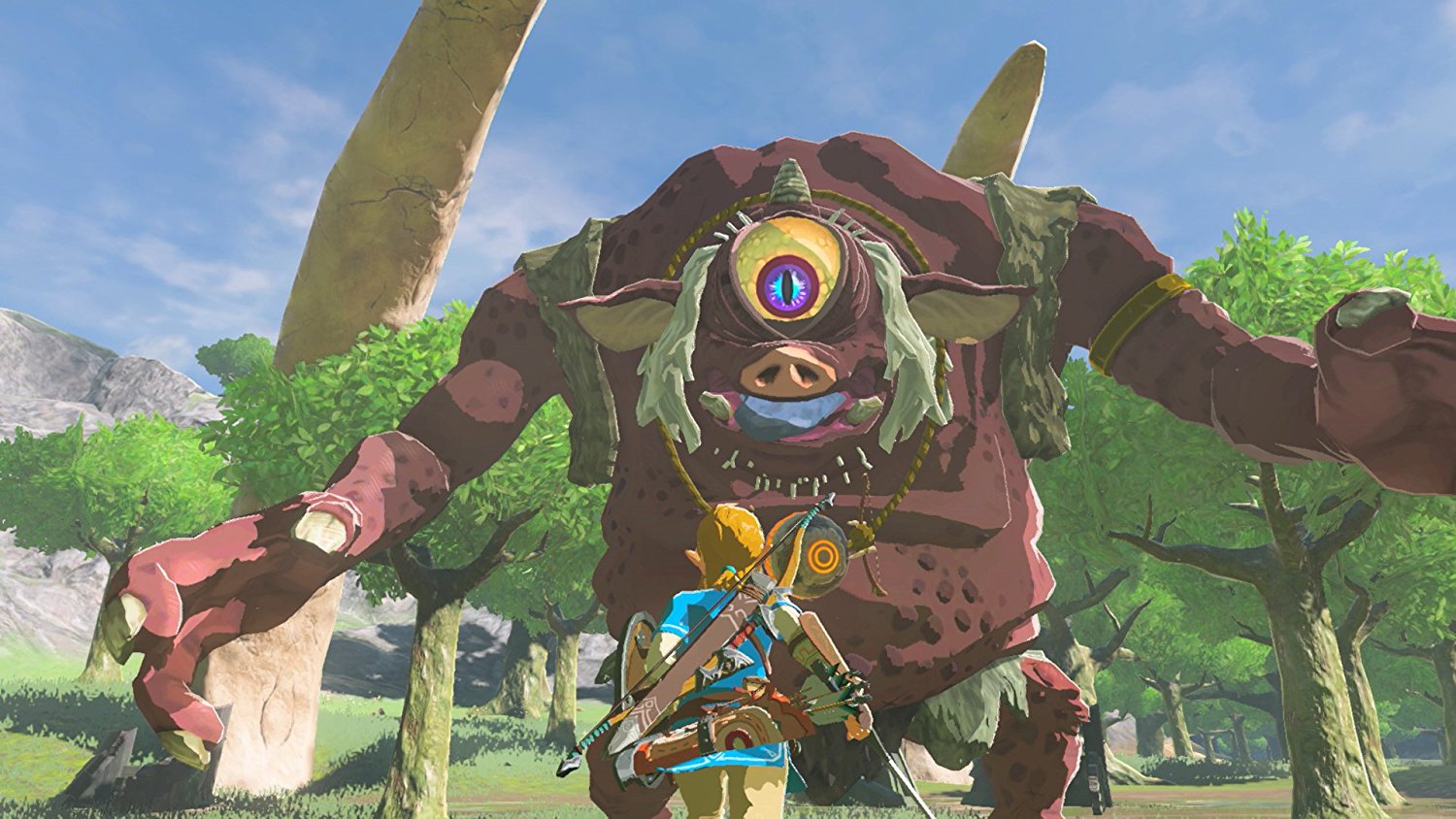
Visually, the game is gorgeous. There will certainly be arguments made for it to be the best looking game that Nintendo has ever crafted. Breath of the Wild makes use of the same cell-shaded graphics (though, to a much lesser degree) that The Legend of Zelda: Wind Waker uses. The draw distances are perhaps the game’s most impressive feat, with landmarks being visible from miles away. Without the draw distance, it’s hard to imagine the game being as immersive as it is. Character design ranges from absurdly detailed (i.e. Link and Zelda) to boring and unappealing. It never presents a real issue, since there are so many different NPCs to interact with, but game isn’t uniformly gorgeous. This includes some washed up textures, which, when viewed up close, remind us of the Nintendo Switch’s relatively low standard of hardware. That said, the game will be sure to hold up over time and it stands among some of the best art designs in video games, presently.
It would be impossible to review a Zelda game without talking about music. The Legend of Zelda: Breath of the Wild is oddly devoid of over-world music, aside from specified locations. If the game’s sound design wasn’t so incredibly put together, it would have been a sour mark on the experience. As it stands, the music is used meticulously. When it does pop up, it’s every bit as gorgeous as what we’ve become accustomed to. Perhaps the most impressive thing about the soundtrack is how little it relies upon former tracks in the franchise. Aside from a few “remixes”, which seem more fitting for the game’s theme than anything else, you’re unlikely to hear any of your favorite tracks from previous titles. Most of Breath of the Wild’s best songs come during more important moments, including the end-game material. Somehow, it makes the tracks more impact than they’ve ever been in the franchise. So while it may be disappointing that music plays less of a role than it ever has in the franchise, the OST as a whole is both delightful and expertly used.

Lastly, I would be remiss if I didn’t talk about the game’s astoundingly quiet narrative. Just like everything else in the game, how much narrative and how much story you get is ultimately left up to you. In this game, Link has woken from a 100 year slumber to help save Hyrule and Zelda from Ganon’s grip. There isn’t much different in the way of traditional plot points, but the way in which they are laid out and received is very well handled. It helps that Hyrule feels like a living, breathing place. One of the few similarities that the game has with The Legend of Zelda: Majora’s Mask is that the characters all seem to be living in the same world that you are. Sure, they all have their own individual problems, but they’ll often remark on the world’s latest happenings — including some hilarious bits like Link’s choice in clothing or the weather.
Much of the game’s exposition is delivered through a chunk of cut scenes, all of which are voiced over and graphically polished. The voice over work, at least in English, ranges from very fitting (Zelda) to over done and comical. There’s a world where all of the dialogue could have been captured with voice overs, but as it stands, it’s a nice stepping stone for a franchise that seemed terrified to give the game a voice.
Breath of the Wild is an effort for the fan base to realign itself. Most of what the game gives you in terms of narrative is used to sort of catch you up on the roots of its lore. The story focuses on three of the most prominent species in the Zelda franchise, while also extrapolating on the fascinating Rito race, which are a callback to the avian species that existed in The Legend of Zelda: Wind Waker. There’s little conflict for the four races, outside of the fact that Ganon is really screwing with their way of life. The more interesting bits, especially for the Gerudo, come from deeper conversations. Nearly every NPC has something interesting to say (and there are a lot of NPC’s) and they all add to the expert world building that the game focuses on.
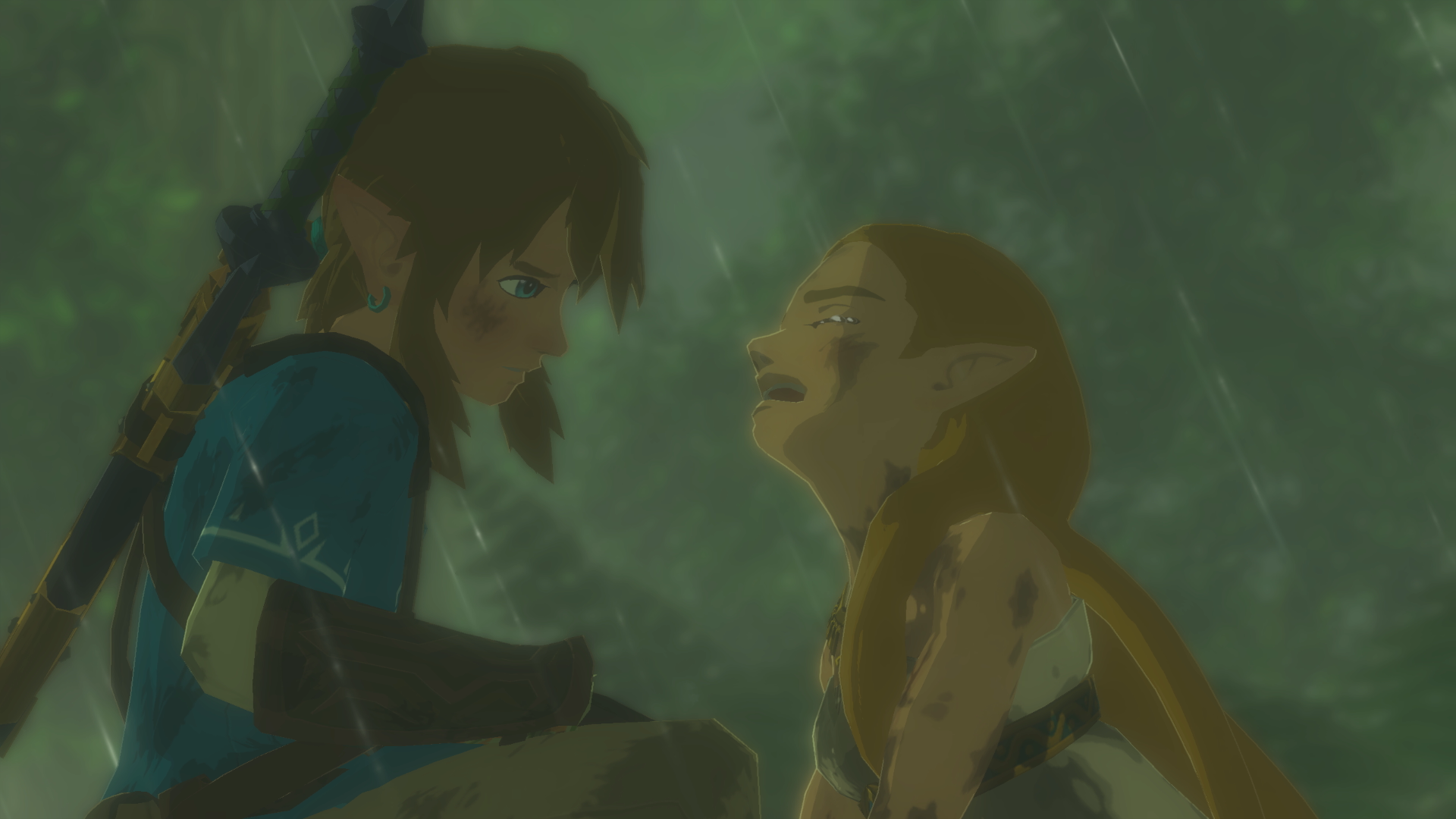
Though, at the end of the day, this is a story that openly discusses the exhausting – and seemingly never ending – fight between Ganon and Zelda. It almost wistfully remarks on the plot conventions used in previous Zelda games, and begs the question: will we ever see a world where Hyrule can be free of Ganon’s ploys? Or is the world and all the creatures that behold it doomed to a never ending battle between good and evil? It’s unfortunate that the game never answers the questions at hand, but doing so would almost certainly make things more complicated for the franchise moving forward.
The Legend of Zelda: Breath of the Wild isn’t a perfect game. There are too many facets of the game that it simply doesn’t excel at, including it’s poor one-on-one combat, some lackluster dungeons that lack the iconic feel of the franchise and an inability to carry to deliver a unique story. The game also suffers from a handful of performance issues, especially during combat – where, infrequently, you’ll see your framerate slow to a crawl. But just like Ocarina of Time before it, we won’t be judging this game on what it didn’t do well. Instead, we’ll recall the first time we experience the brilliance of so many new mechanics that video games simply hasn’t seen before.
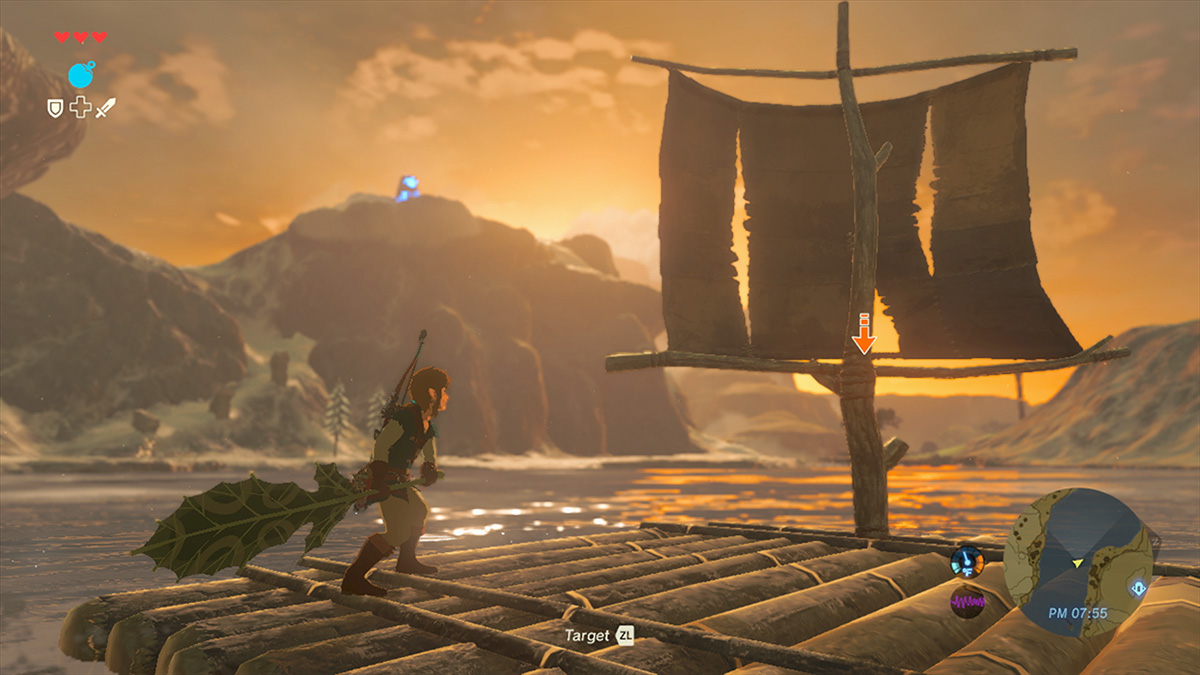
The game has undoubtedly raised the bar for its peers, and it’s impossible to imagine a future where Breath of the Wild isn’t remembered as being incredibly influential. Though, perhaps we’ll be left with another Majora’s Mask, where many of its qualities, such as the open world where nearly anything is possible, is just another stroke of genius that stays with the series. Perhaps the idea of living up to this incredible experience will be too much for other developers to take on.
But I hope that isn’t the case. If, several years from now, we can look back on Breath of the Wild and point to the mechanics it invented or changed and say “wow, that’s where it all began”, then the video game world will be better off for it.
Score: 10
